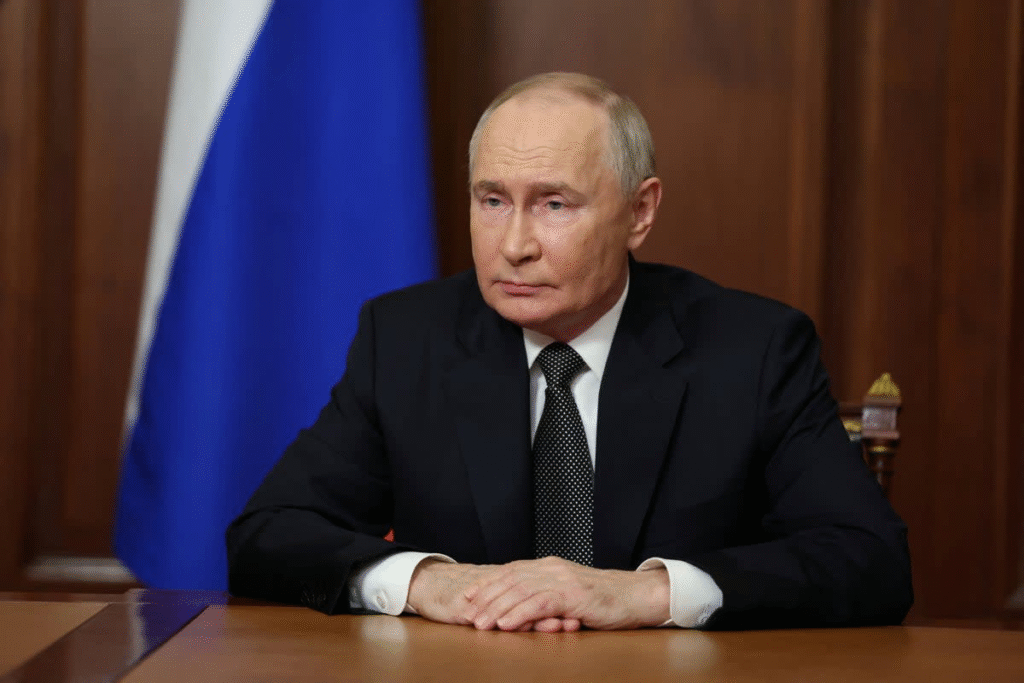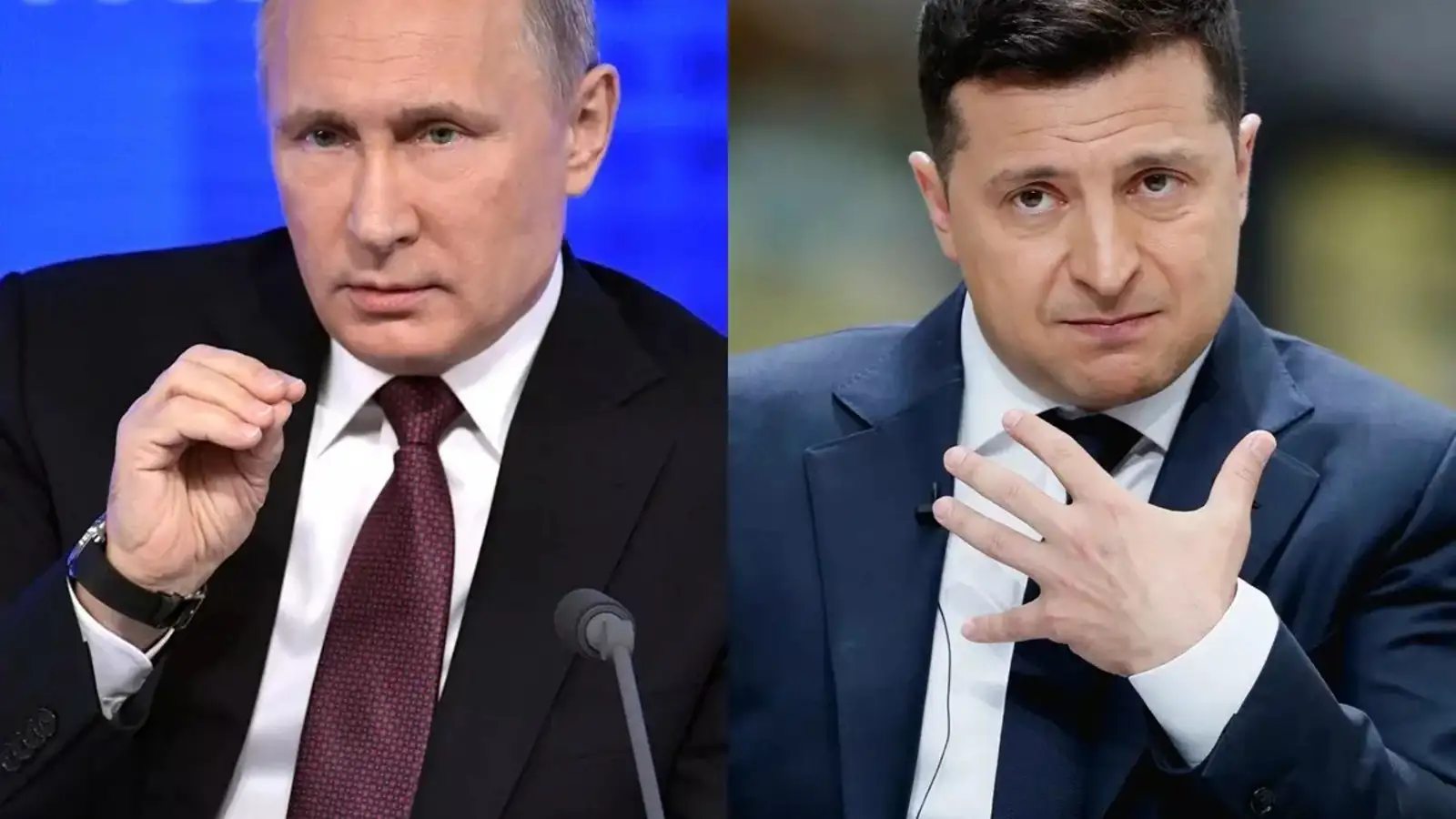
In the complex and often volatile geopolitical landscape of South Asia, certain moments emerge as critical flashpoints, revealing the delicate balance of peace and conflict that defines the region. One such moment came when India launched missile strikes on Pakistani territory—a military action that startled not just the subcontinent but the entire world. Among the most apprehensive was Russian President Vladimir Putin, whose reaction underscored the broader implications of this escalation for regional and global stability.
To truly comprehend the significance of that night and why it sent ripples far beyond South Asia, it is essential to examine the long-standing tensions between India and Pakistan, the events leading up to the strikes, the nature of the operation itself, and the global diplomatic response. This narrative explores the multi-layered story behind the missile strike, offering a nuanced view of the intricate power dynamics and the fragile peace maintained in one of the world’s most dangerous nuclear flashpoints.
A Historical Rivalry Rooted in Partition and Kashmir
The animosity between India and Pakistan traces back to the traumatic partition of British India in 1947, which led to the creation of two independent nations. The partition was marked by mass displacement, communal violence, and unresolved disputes—none more significant than the question of Kashmir. This picturesque yet contested Himalayan region has been at the heart of three wars between India and Pakistan and countless skirmishes and diplomatic standoffs.
Kashmir’s status remains a highly sensitive issue. India claims it as an integral part of its territory, while Pakistan asserts that the Muslim-majority region should have been part of its domain after partition. The dispute has shaped national identities and political narratives on both sides, fueling decades of conflict.
Despite several wars and ongoing hostility, both countries have managed to avoid full-scale conflict in recent decades, primarily due to the terrifying reality that both are nuclear-armed powers. The risk of escalation has often restrained their actions, but sporadic violence and terrorism linked to Kashmir keep tensions simmering.
The Pulwama Attack: Spark that Ignited the Fire
The immediate precursor to the missile strikes was the deadly suicide bombing in Pulwama, Jammu and Kashmir, on February 14, 2019. A convoy of Indian paramilitary personnel was targeted, resulting in the death of 40 soldiers. The attack was claimed by Jaish-e-Mohammed, a terrorist group based in Pakistan. The incident shocked India, stirring national outrage and calls for a strong response from the government.
Prime Minister Narendra Modi’s administration faced intense domestic pressure to retaliate decisively. For India, the attack was more than just an act of terror; it was a challenge to the country’s sovereignty and security. The government declared that it would not tolerate cross-border terrorism and vowed to take action.
This marked a turning point. While India had traditionally responded to terror attacks with diplomatic pressure and covert operations, the Pulwama attack prompted a bold, overt military response—launching missile strikes on Pakistani territory.
The Missile Strike and Its Execution
In the early hours following the Pulwama attack, the Indian Air Force carried out precision missile strikes targeting what it described as terrorist training camps in Balakot, Pakistan. The strike was significant in multiple ways. It crossed the Line of Control (LoC), the de facto border separating Indian and Pakistani controlled Kashmir—a boundary traditionally respected to avoid open warfare.
The Indian government presented the operation as a measured response aimed specifically at terror infrastructure, rather than Pakistani military installations. The strike was executed with precision-guided munitions, intending to minimize collateral damage while sending a clear message to terror groups operating in Pakistan.
The operation surprised many, including international observers, for its scale and overt nature. The strike was the first direct cross-border military action since the Kargil conflict in 1999, marking a shift in India’s strategic posture.
Immediate Fallout: Pakistan’s Response and Escalation
Pakistan condemned the missile strike as a violation of its sovereignty and vowed retaliation. Soon after, Pakistan’s air force crossed the LoC, leading to aerial dogfights and exchanges of fire along the border. This rapid escalation heightened fears of a wider conflict.
The situation was precarious. Both India and Pakistan maintain nuclear arsenals, and the possibility of miscalculation loomed large. International diplomats scrambled to contain the crisis, urging restraint and dialogue.
The brief but intense confrontation that followed the missile strike underscored the fragility of peace in South Asia. It demonstrated how quickly localized attacks could escalate into broader military engagements with potential global consequences.
Why Putin Was Alarmed: Russia’s Strategic Calculus
Russian President Vladimir Putin’s reaction to India’s missile strikes was shaped by Russia’s complex strategic interests in South Asia and beyond. Russia has historically maintained a strong relationship with India, rooted in Cold War-era defense cooperation and economic ties. However, it also values its relationships with Pakistan and China, Pakistan’s closest ally.
Putin’s alarm was driven by several intertwined concerns. First, Russia viewed the missile strikes and subsequent escalation as threats to regional stability, a cornerstone of Russia’s broader security strategy in Eurasia. The Central Asian republics bordering Afghanistan and Pakistan are critical to Russia’s sphere of influence, and instability there could easily spill over.

Second, Russia was wary of any conflict that could spiral out of control between two nuclear-armed nations. The prospect of a full-scale India-Pakistan war, with unpredictable global ramifications, was alarming. Putin’s response reflected a cautious leadership style that prioritizes stability and calculated diplomacy over sudden military confrontations.
Third, Russia’s global ambitions, including its involvement in conflicts such as Syria and its tense relations with the West over Ukraine, meant that it could ill afford another crisis diverting its attention and resources. The missile strikes added an additional layer of complexity to an already challenging international landscape for Russia.
The United States’ Involvement: Trump’s Diplomatic Balancing Act
As tensions mounted in South Asia, the United States, under President Donald Trump, took an active diplomatic role. The Trump administration’s approach was marked by its characteristic unpredictability but also a clear desire to prevent a major conflict between two nuclear neighbors.
Trump reportedly engaged in intense diplomatic communication, placing calls to both Indian Prime Minister Modi and Pakistani Prime Minister Imran Khan. The urgency of these communications reflected the high stakes of the situation and the U.S.’s interest in maintaining regional stability.
While the U.S. expressed support for India’s right to defend itself against terrorism, it also emphasized restraint to prevent escalation. Trump’s involvement highlighted Washington’s complex position—balancing its strategic partnership with India while recognizing Pakistan’s role in the region and the broader counterterrorism landscape.
The Global Community’s Reaction and Calls for Calm
The missile strike and ensuing escalation drew sharp reactions from the international community. The United Nations and major powers including China and the European Union expressed concern and urged restraint. China, as Pakistan’s closest ally, condemned India’s actions and warned against destabilizing the region.
Many global leaders stressed the importance of dialogue and peaceful resolution of disputes. The crisis highlighted how interconnected South Asia’s peace is with broader international security.
Analysts noted that the incident underlined the dangers inherent in the India-Pakistan conflict, especially given both nations’ nuclear capabilities. The risk of escalation into a wider war remains one of the most worrying security challenges in the contemporary world.
The Human Toll: Civilians and Soldiers in the Crossfire
Amidst the strategic calculations and international diplomacy, the human cost of the conflict is profound. Civilians living along the Line of Control faced artillery shelling, displacement, and psychological trauma. Families mourned soldiers lost in skirmishes and the broader shadow of insecurity.
The missile strikes and subsequent border clashes intensified fear and suffering among local populations, compounding decades of hardship in conflict zones. Humanitarian agencies highlighted the urgent need for conflict resolution to alleviate civilian suffering.
The conflict also deeply affected the soldiers who risk their lives daily, highlighting the personal sacrifices embedded within geopolitical rivalries.
The Role of Media and Public Sentiment
Media narratives played a significant role in shaping public perceptions in both India and Pakistan. In India, the missile strikes were largely portrayed as a decisive and justified retaliation against terrorism, bolstering national pride and support for the government’s hardline stance.
In Pakistan, the media framed the strikes as aggressive acts of violation and injustice, rallying nationalist sentiment and support for resistance. This polarization in narratives contributed to heightened public emotions and complicated diplomatic efforts.
The information war, fueled by social media and news channels, amplified nationalist fervor on both sides, making reconciliation efforts more challenging.
The Broader Geopolitical Context: South Asia and Beyond
The India-Pakistan missile strike episode cannot be understood in isolation. It is part of a larger geopolitical framework involving China’s rise, Russia’s strategic interests, and the global fight against terrorism.
China’s support for Pakistan, including economic projects like the China-Pakistan Economic Corridor (CPEC), adds another layer to regional dynamics. India views China’s growing influence with suspicion, complicating trilateral relationships.
Russia’s balancing act between India, Pakistan, and China reflects its broader ambitions to maintain influence in Eurasia. The United States’ pivot towards India as a counterbalance to China further intertwines global powers in South Asian affairs.
These overlapping interests make the region a hotspot of international competition, with peace hanging by a delicate thread.
Lessons Learned and the Path Forward
The missile strike episode reinforced several vital lessons about crisis management in nuclear South Asia. It highlighted the need for reliable communication channels between India and Pakistan to prevent misunderstandings that could spiral into full-scale war.
Confidence-building measures and diplomatic engagement remain essential to reduce tensions. Resolving the Kashmir dispute—long seen as the root cause of hostility—is critical for lasting peace.
The role of international mediators and neutral forums is indispensable in facilitating dialogue and preventing future escalations.
Conclusion: A Night that Echoed Globally
The night India fired missiles on Pakistan was more than a regional incident; it was a moment that shook the global order. Russian President Putin’s alarm was a reflection of how local conflicts can have far-reaching consequences in today’s interconnected world.
The episode underscored the fragile nature of peace in South Asia and the importance of diplomacy, restraint, and sustained dialogue. As India and Pakistan continue to grapple with their complex history and geopolitical realities, the lessons from that night offer a somber reminder that peace requires vigilance, patience, and a shared commitment to security.

